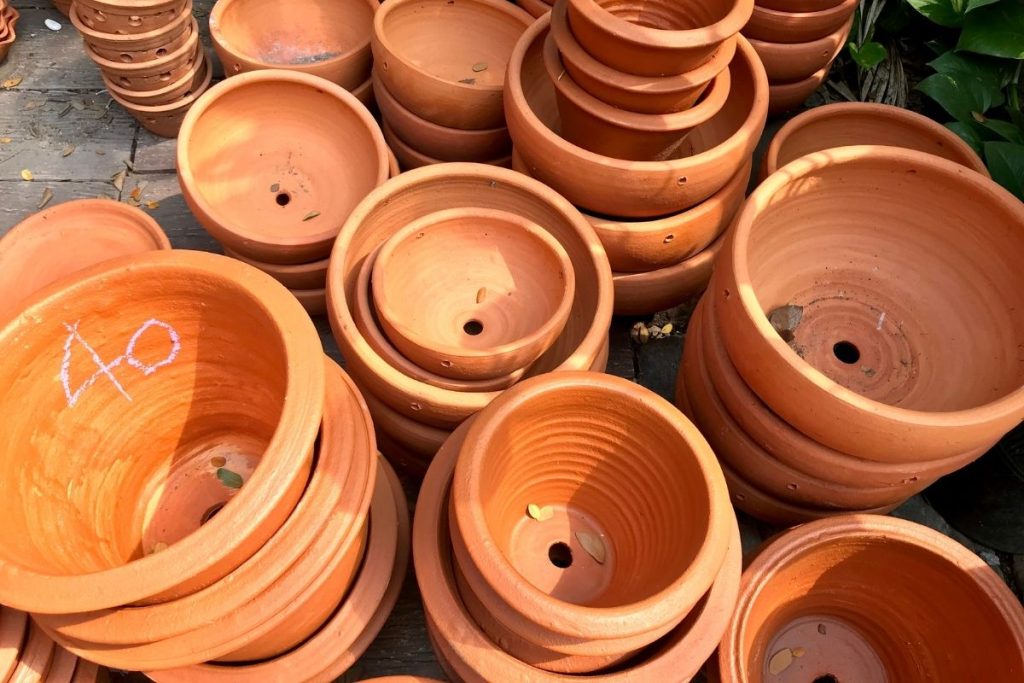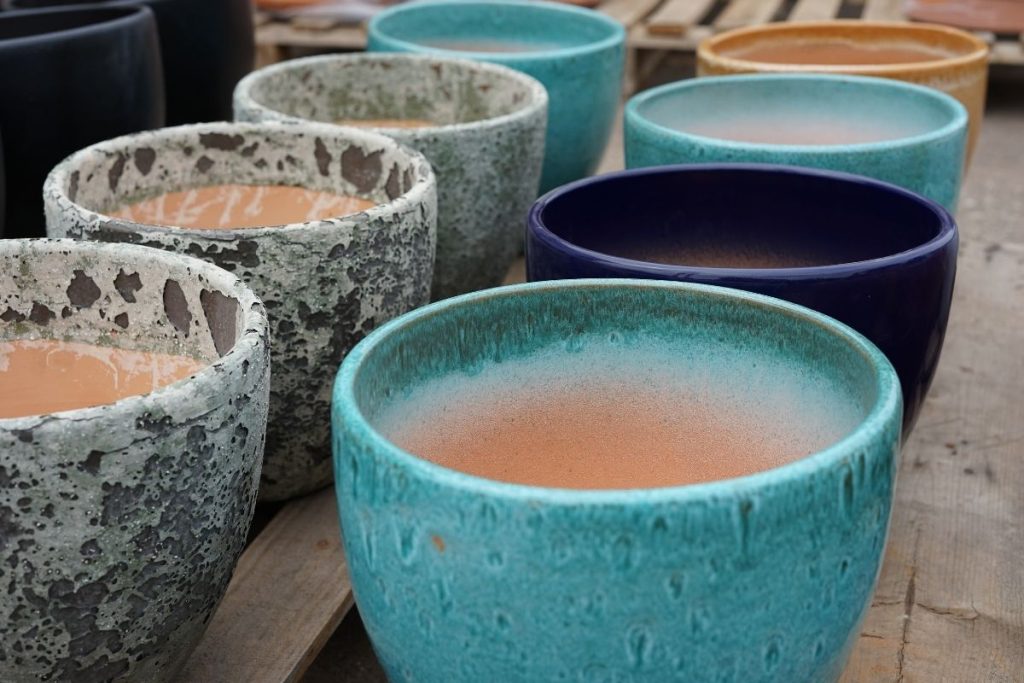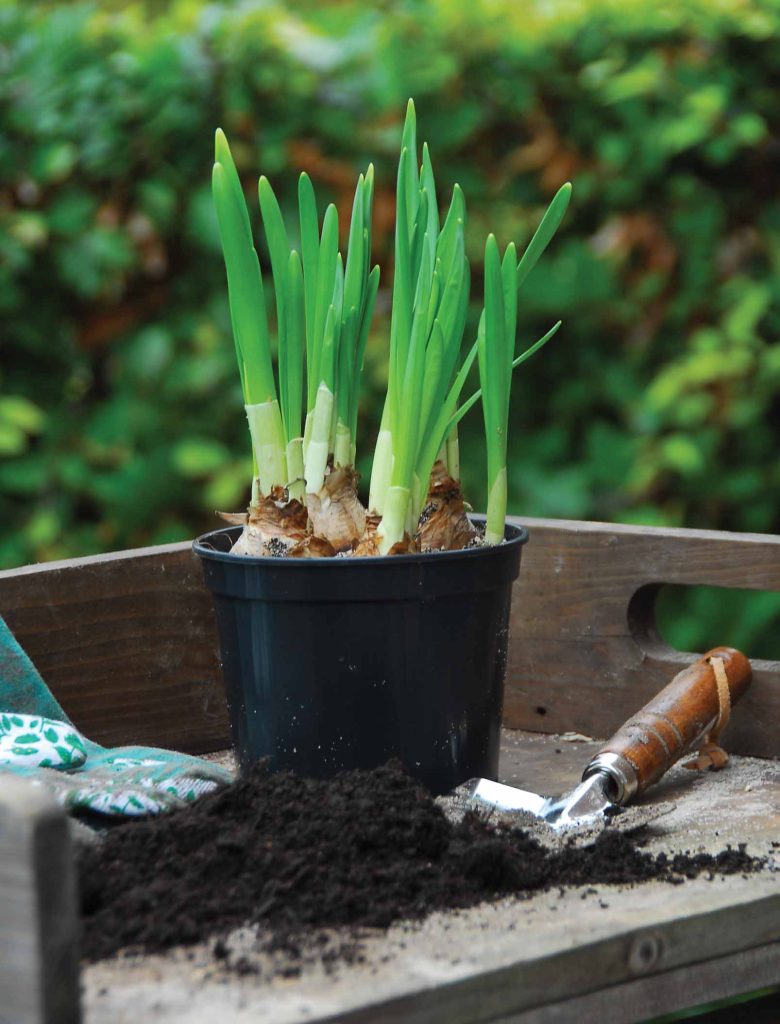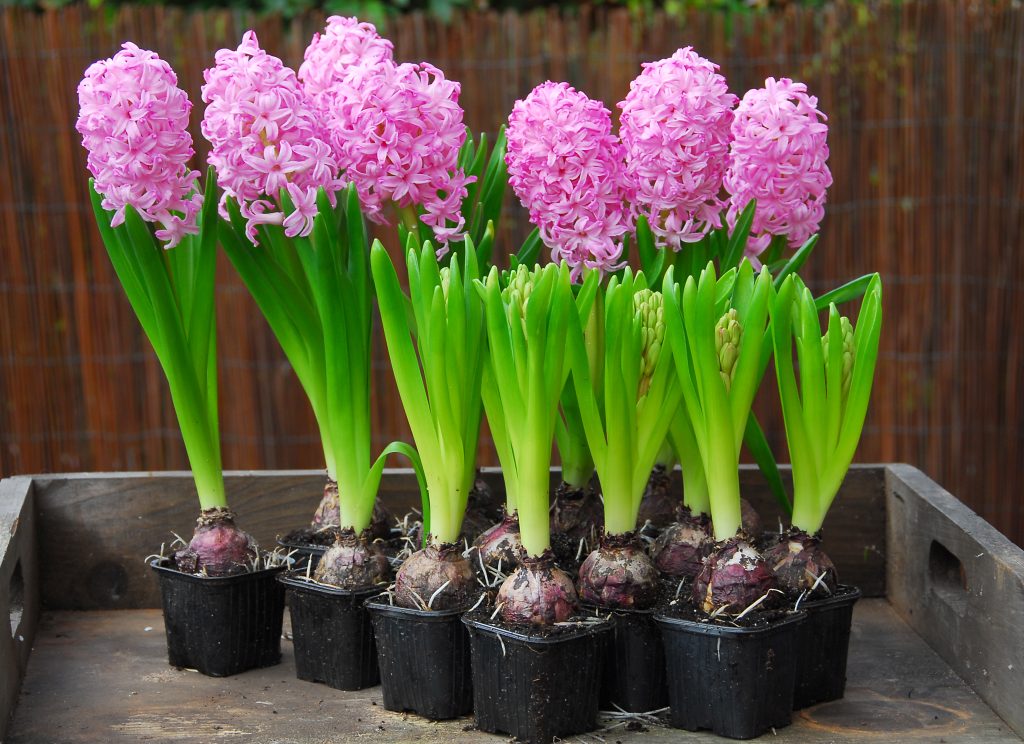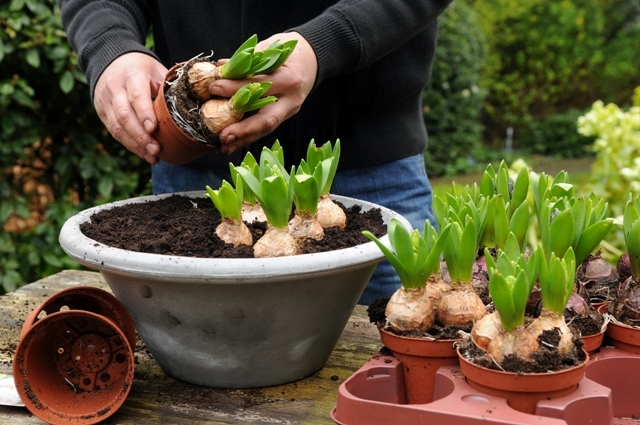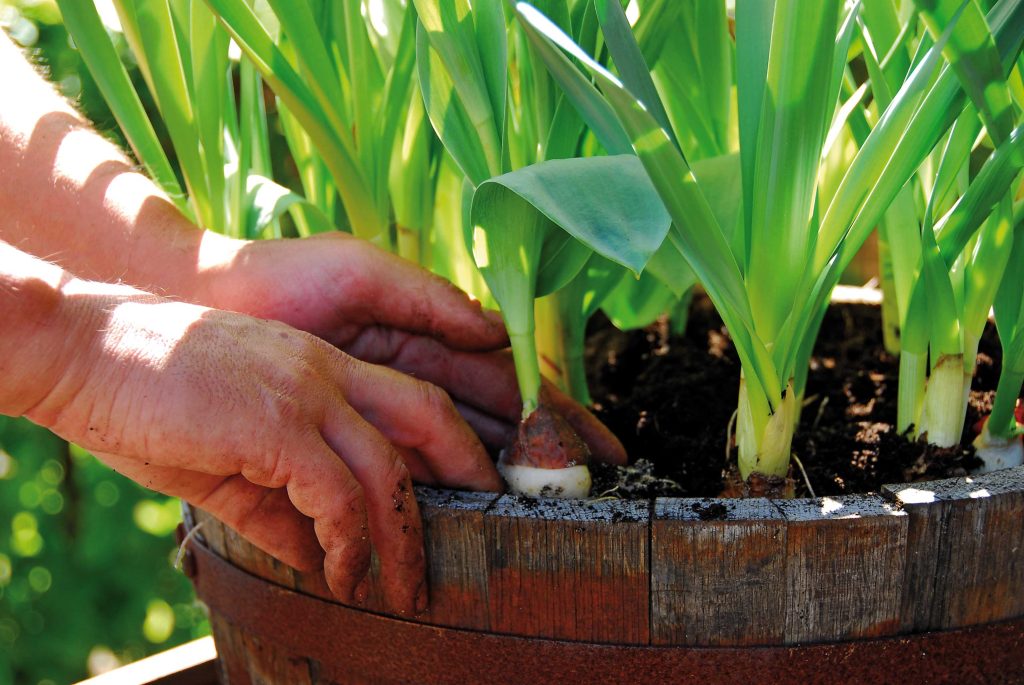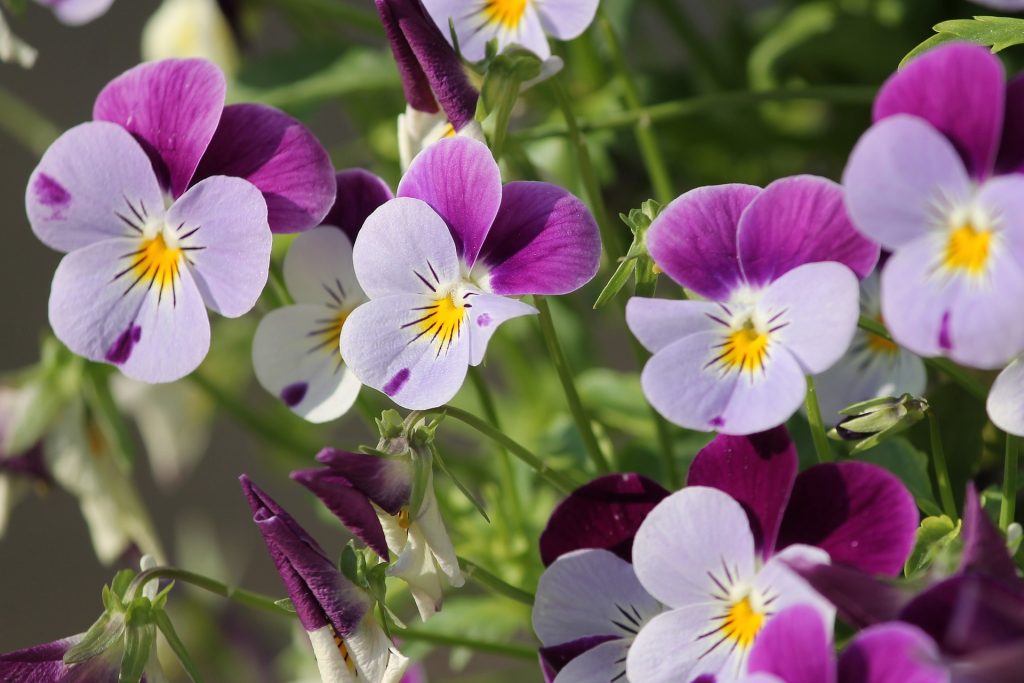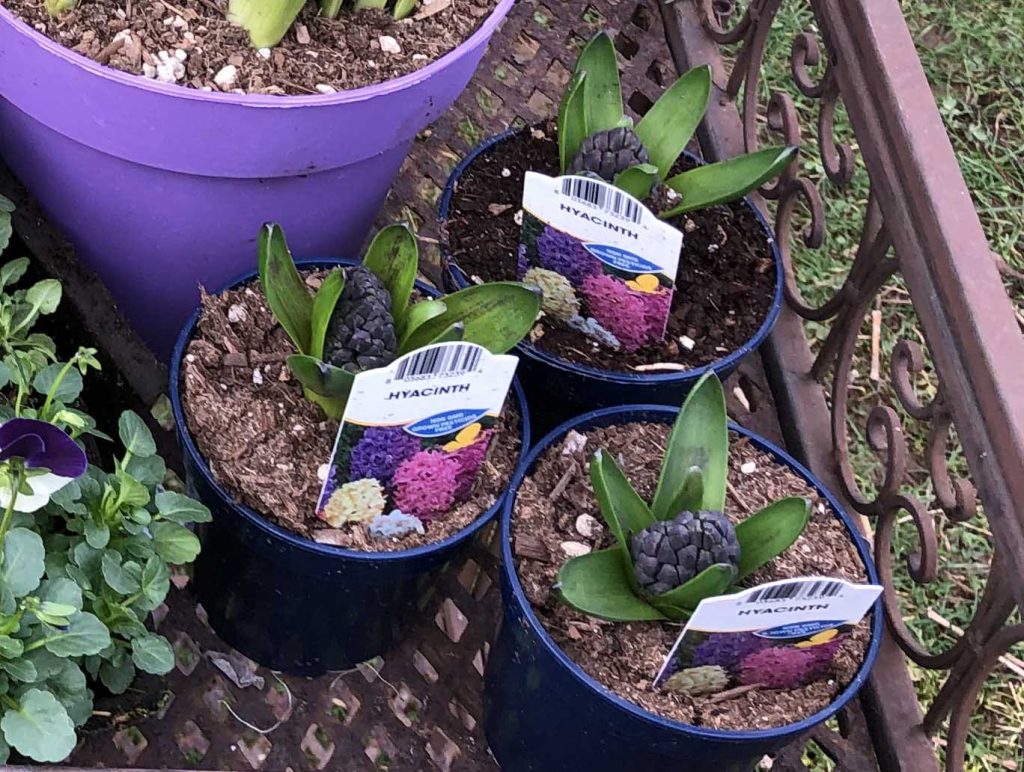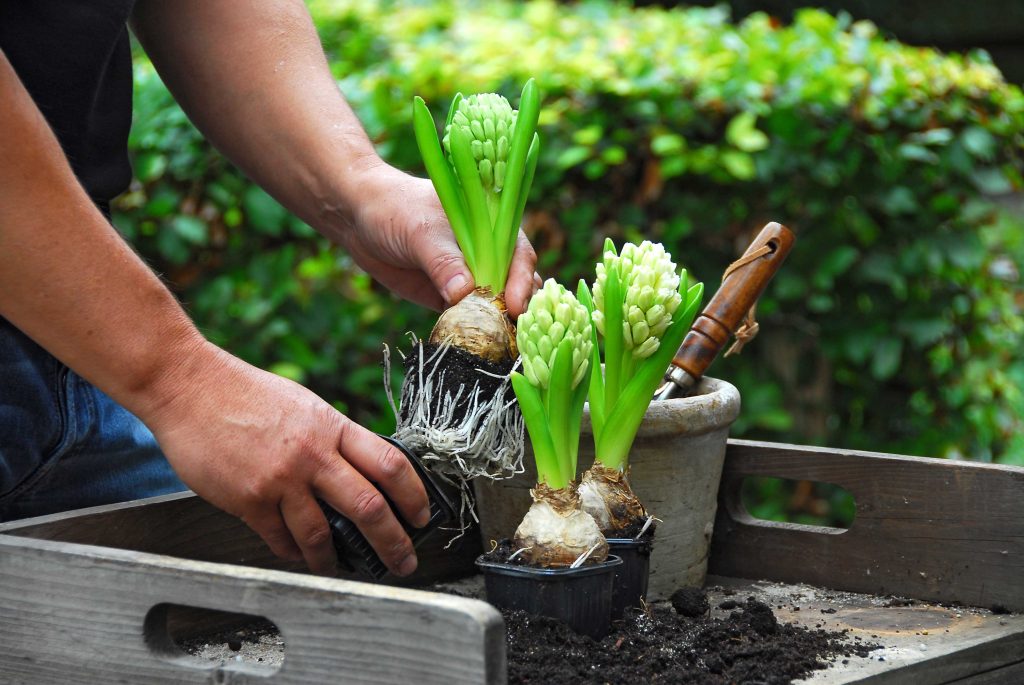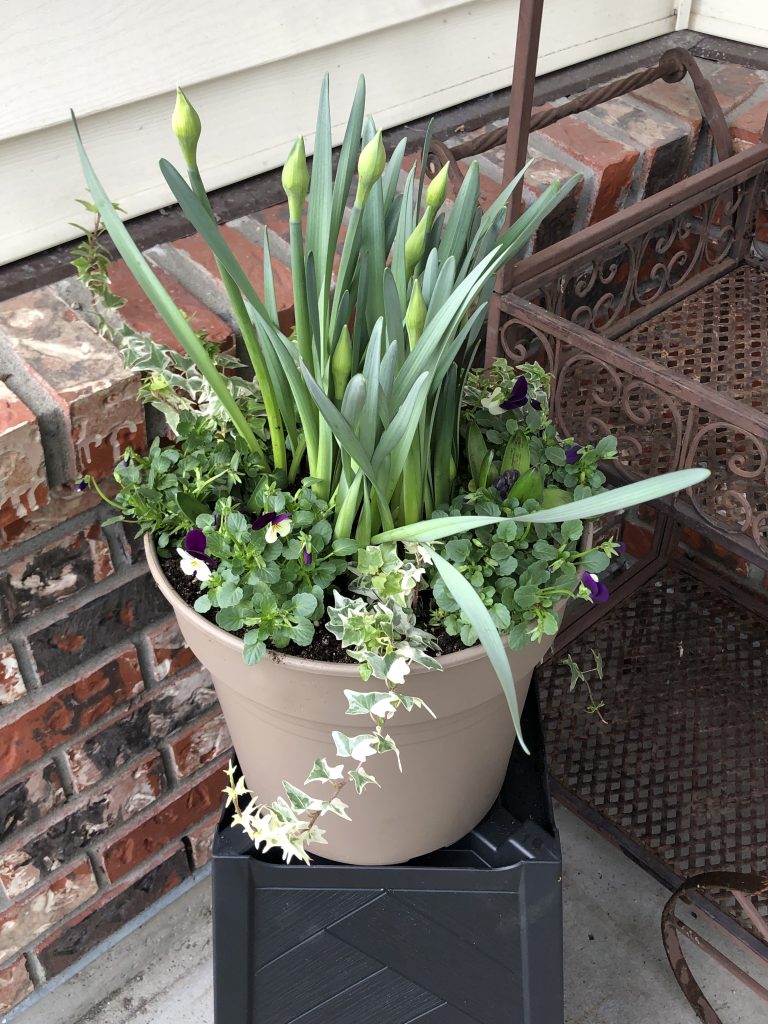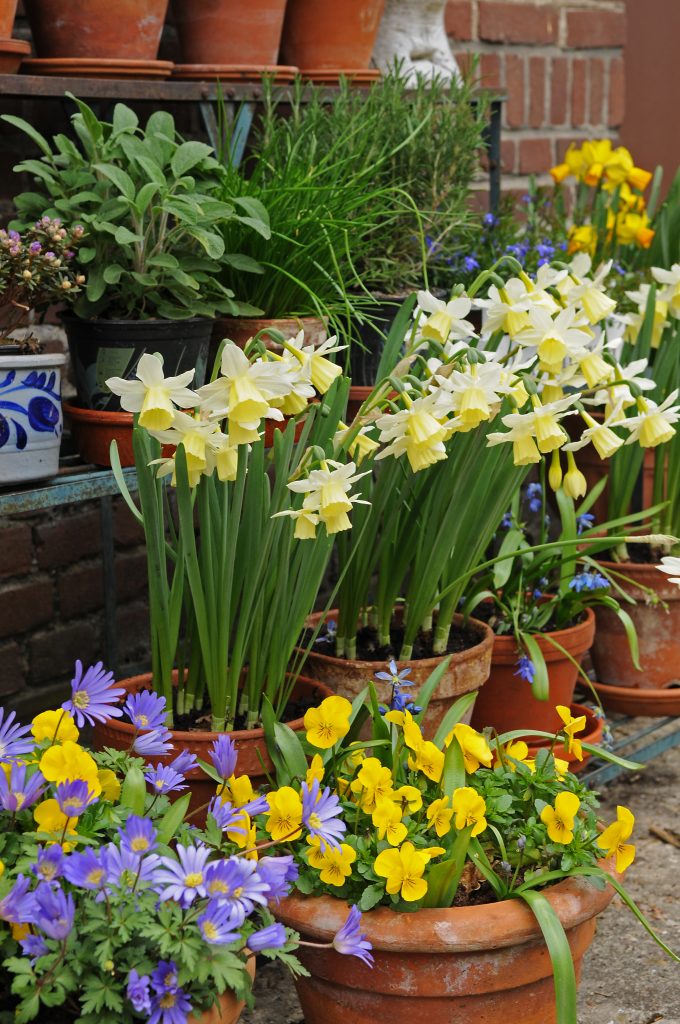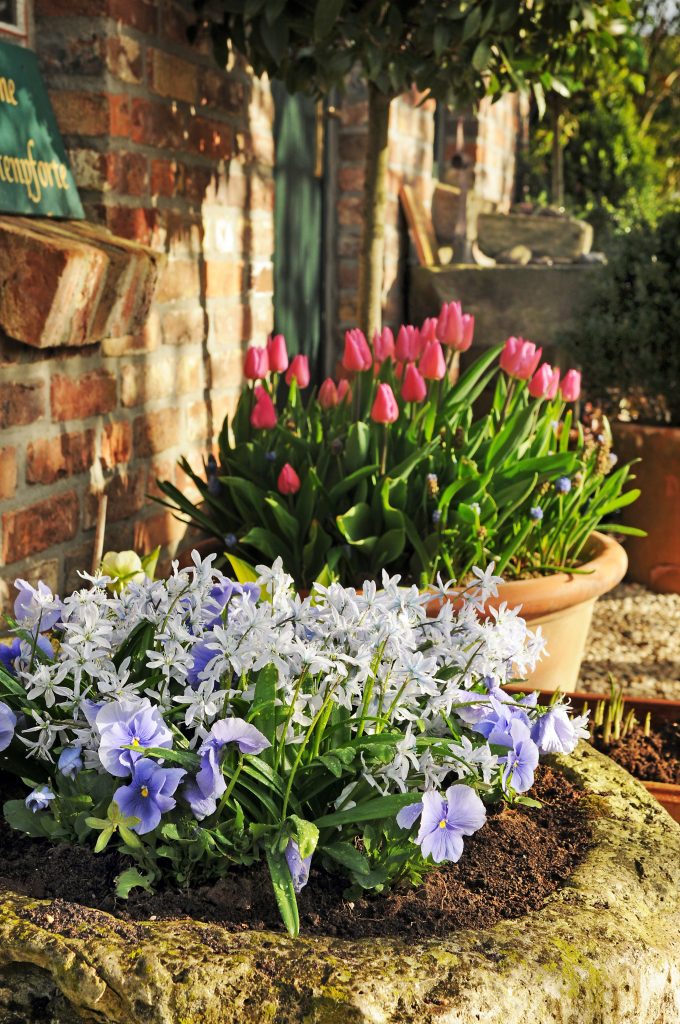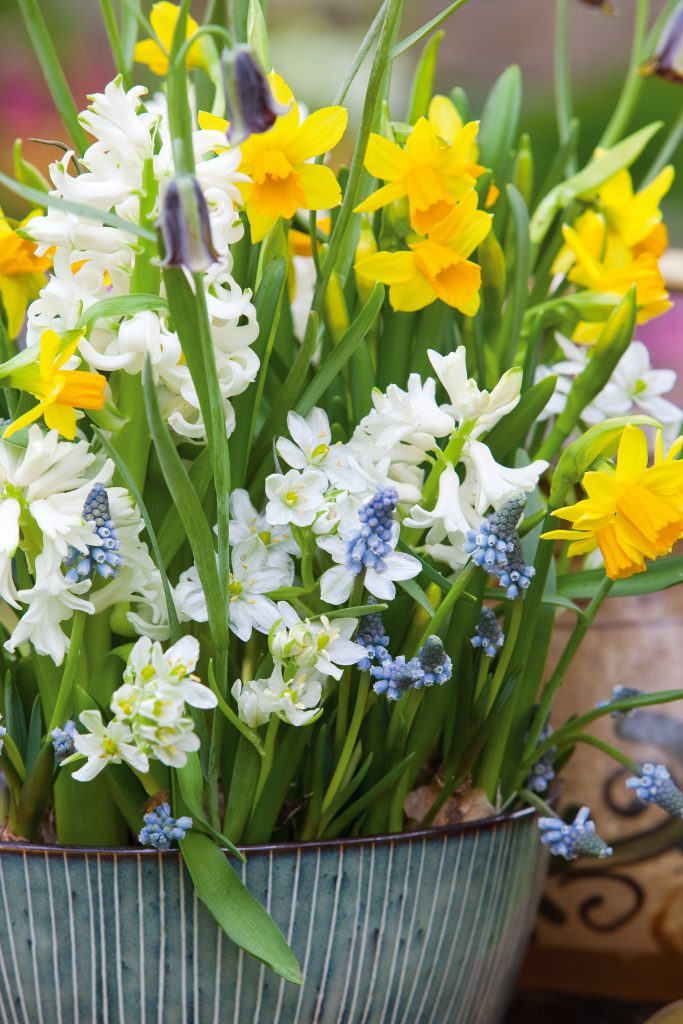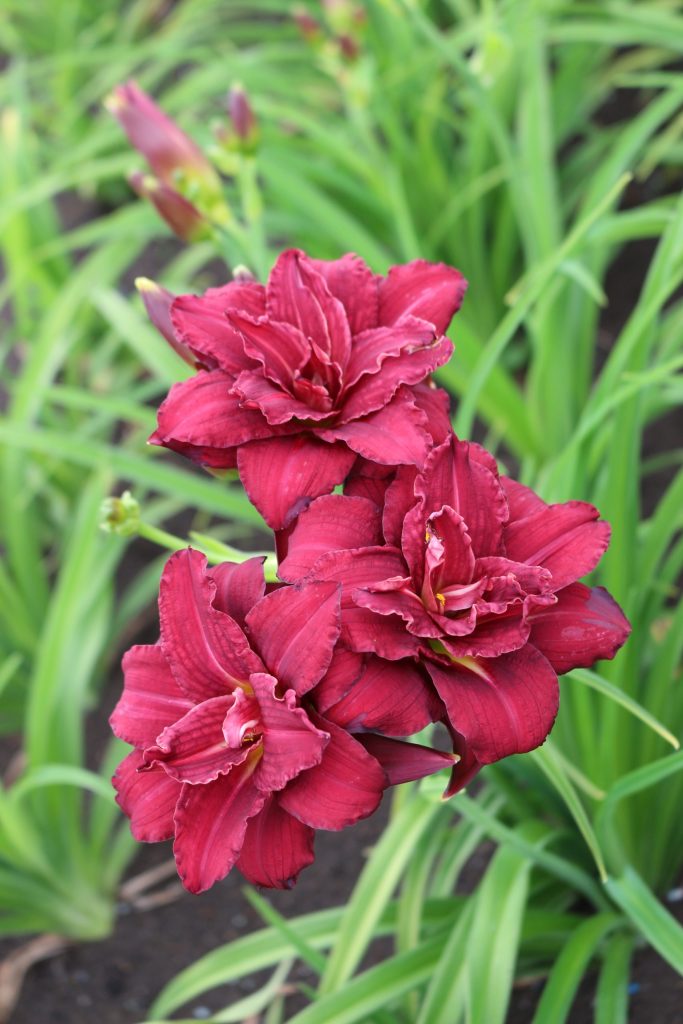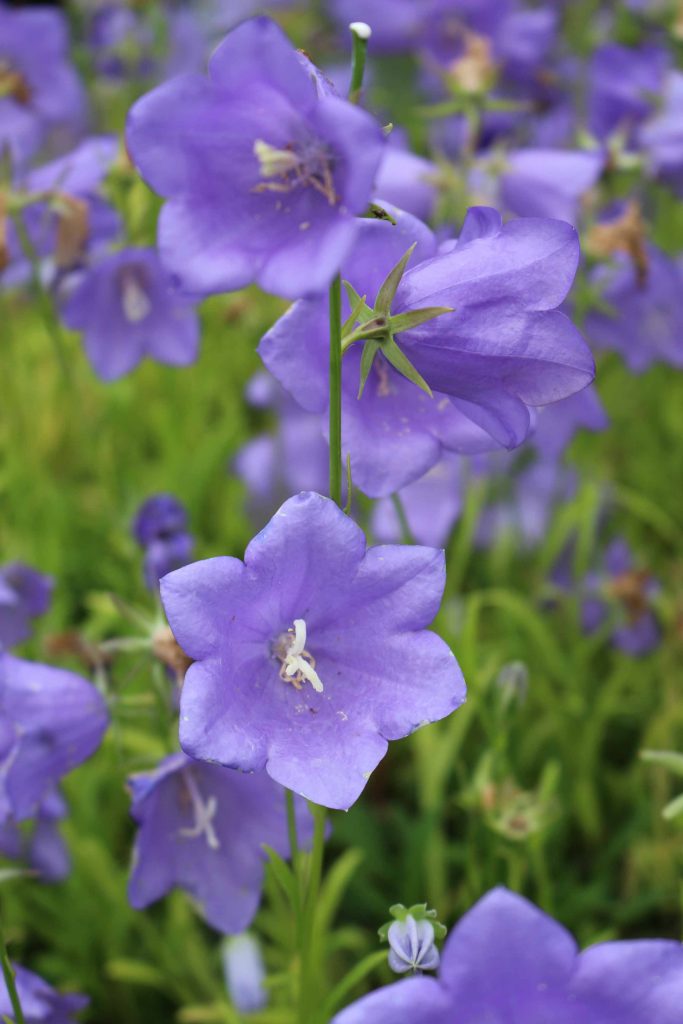
Creating Outdoor Planters with Forced Bulbs
The first signs of spring are upon us, and we hope you’re just as excited as we are to get out into the garden! After a long winter you may not want to wait until spring to add some colour to your outdoor spaces. No problem! You can use forced bulbs and other early blooming annuals to add colour and charm to your planters and window boxes, and we’re here to help!
Believe it or not, there are quite a few flowering plants you can add to your planters in early spring! Favourites like pansies, primulas, and forced flower bulbs add a great pop of colour. Perennial plants like ivy, heuchera and sedum make great fillers in planters that come back every year!
Table of Contents
Let’s Get Started!
First pick your favourite container. It can be the same one you used last year for your planters, or maybe you’re wanting to pick out a new one for this season. For this recipe, we are using a 50-60 cm (20-24”) in diameter sized pot. When you have your container, make sure to remove any plants that have overgrown the space or you’re not using anymore. The next step is to get some fresh soil for your planter. We recommend using a planter box mix or a container mix. Often the soil from your yard is too heavy and contains too much rubble. You may think organic matter is the way to go, however organic matter can be too rich for our flower friends in planters and can cause plants to get upset and not grow properly! Therefore, a nice light potting mix is perfect, as it has the right drainage and moisture retention for your plants to get started!
Pick your Plants
Now that your container is ready, you can start to choose your plants! We like to use anything bright and cheery at this time of year. Our favourites are pansies, forced daffodil bulbs, forced hyacinth bulbs, and ivy. The contrast between colour and height makes this a stunning combination.
In the early months of spring, you can find forced bulbs at the garden centres. These bulbs have been grown in greenhouses and forced to bloom earlier than their normal blooming time. This allows gardeners to enjoy early blooms in their planters, and even in the house! You can often find forced daffodils, tulips, hyacinths, muscari, and iris! Pansies are another early spring favourite that add colour and character to the garden. These flowers come in a full spectrum of colours, from the brightest whites to the deepest purples and blues. You can even find multicolored pansies too! You’re sure to find one that fits your design dreams. Pansies love cooler temperatures, making them perfect for the early spring months. Being a petite plant, pansies are best planted in the front of planters, adding fullness and colour. Ivy adds a nice trailing look to the planter, and best of all it’s an evergreen, so it will stay green all year round, perfect for your planters in each season!
Time to Plant!
Now that you’ve picked out your plants, it’s time to get your hands dirty! We’ve made a template for you to make the layout of your plants easy and foolproof! Lay out your plants on top of the soil, and make sure it all fits and you like the look before you plant them. This way you can play around with the placement a bit before committing. First plant your bigger plants. In reference to the planting recipe we’ve provided, that would be the forced daffodils, and hyacinths. Start with planting the 3 daffodils in the middle (of course this for approximately a 50-60 cm in diameter pot, adjust accordingly to the size you’re working with), keeping them about 10 cm apart from each. Plant as deep as the size of the pot, and not any deeper. Err on the side of shallow if you’re a bit unsure. Next, plant your 3 forced hyacinths in around the daffodils. Next, plant the ivy close to the edge of your container so that it can nicely spill over the sides, and continue to grow and trail. Lastly, plant your pansies in the spaces between the bulbs and ivy to add colour and fullness. Depending on the size of your ivy plants, you can plant anywhere between 3 to 6 pansy plants. Ensure it’s nice and full but not overcrowded. Make sure you leave some room for your new flower friends to grow!
Care
Now that everything is planted, give your planter a good water. Usually during the early weeks of spring, you don’t need to water as much as you would in the heat of the summer. However, based on where you put your planter, you may have to check up on it, and water if the soil is dry. This is especially true if you place your planter under an awning, or covered porch that doesn’t catch any of the rainfall.
We recommend using a water soluble or liquid fertilizer once every two weeks to help boost the growth of your plants. Find a fertilizer that is meant for boosting blooms, that will often have a higher middle number. Have you ever wondered what the numbers on fertilizers mean? Well, the 3 numbers are for N-P-K, standing for nitrogen, phosphorous, and potassium. Each number does something different for your plants, the first number refers to N (Nitrogen) which helps with the green growth of the plant, (the foliage and leaves). The second value, P (Phosphorus), is used to generate blooms and encourage flower growth. This is why we recommend using a high middle number fertilizer for your early spring planter. Lastly is K (Potassium), the third number, which helps to regulate a plants carbon dioxide intake and root growth to create a strong plant. So next time you’re looking for a fertilizer, remember foliage, blooms, and roots! This way based on what you’re looking for you can find the right fertilizer for you!
Although beautiful, our planters may need a little TLC every once and a while. You may notice that the flowers will begin to shrivel up and fade. At that time, it is important to deadhead those spent blooms. For pansies, you want to pinch the stem as far down as you can go. This way, all the nutrients will go into new blooms, rather than the flowerless stem which is no longer attractive. As for your daffodils, and hyacinths it’s the same idea. Pinch off the blooms, and with daffodils you can go down the stem and pinch at the base of the soil. With hyacinths you may need to cut them down with pruners or scissors since their stems are quite a bit thicker. With ivy, just pinch off any browning leaves you may see. This will encourage new growth, and immediately freshen up your vine! With deadheading you can enjoy your planter for much longer and encourage new growth throughout the season!
Eventually your pansies and forced bulbs will be done for the season. Once there are no more buds left of lively growth, it is time to replace those plants. You can replace them with summer bulbs like dwarf lilies, compact dahlias or annuals like geraniums, petunias, or coleus. For something more permanent, swap them out for perennials like hemerocallis (daylily), campanula, or astilbe! The options are practically endless with what you can add – so dream to your heart’s content! Take a wander around the garden centre see what catches your eye and if it will fit in your planter!
Enjoy!
Now is the perfect time to create your early spring planters and add colour and cheer to your outdoor spaces. Big or small, any sized planter will get you excited for spring, and all of the blooms that are still yet to come! Take our planter template with you to the garden centre and find what you’re looking for to make your planter uniquely yours!




